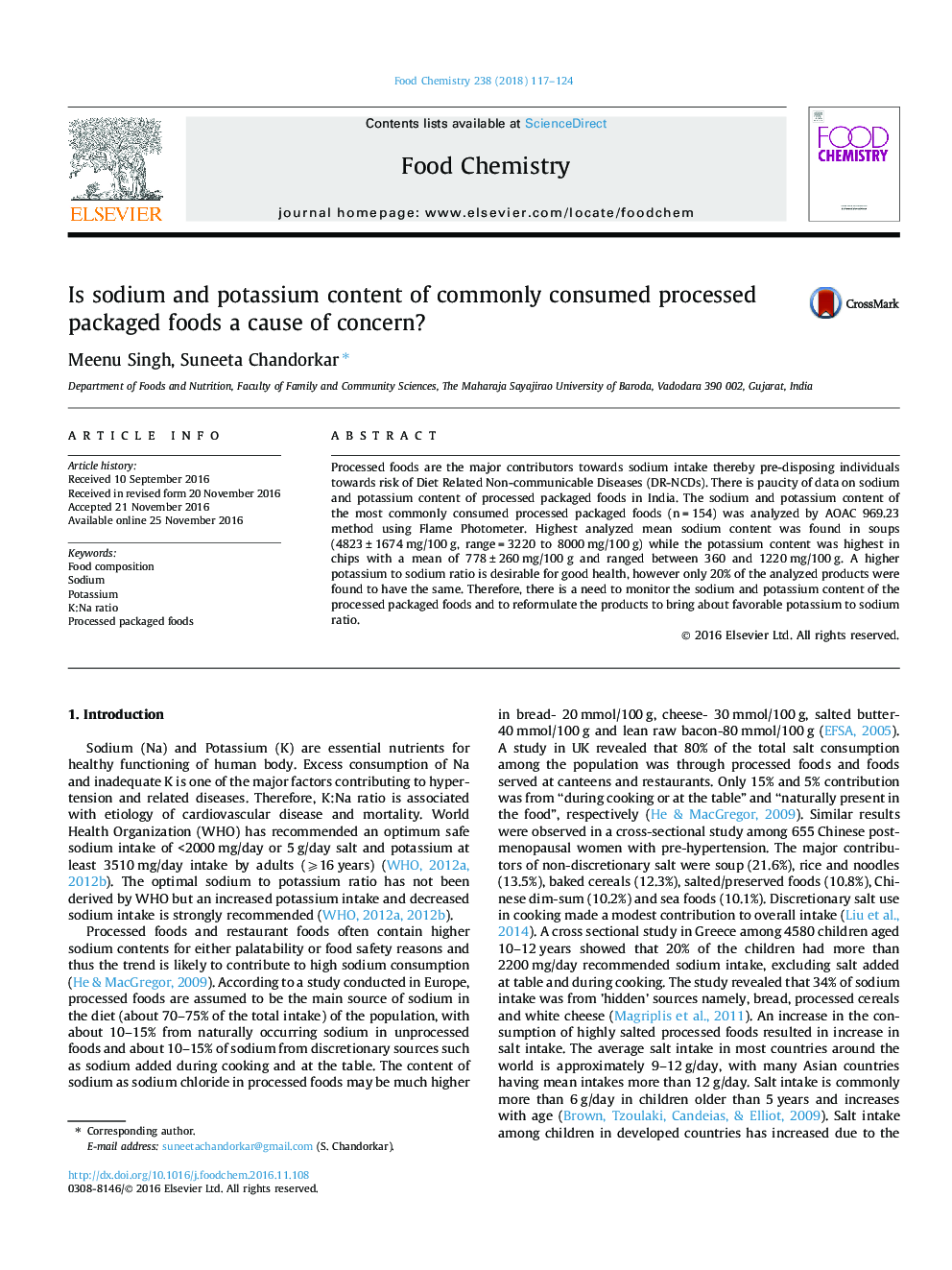| Article ID | Journal | Published Year | Pages | File Type |
|---|---|---|---|---|
| 5132674 | Food Chemistry | 2018 | 8 Pages |
â¢High sodium content of popular processed foods and unfavorable sodium potassium ratio are a cause of concern.â¢Hidden sources of sodium are major contributors towards sodium content of processed foods.â¢Clear guidelines for labeling and mandatory labeling of sodium can help consumers make healthy food choice.
Processed foods are the major contributors towards sodium intake thereby pre-disposing individuals towards risk of Diet Related Non-communicable Diseases (DR-NCDs). There is paucity of data on sodium and potassium content of processed packaged foods in India. The sodium and potassium content of the most commonly consumed processed packaged foods (n = 154) was analyzed by AOAC 969.23 method using Flame Photometer. Highest analyzed mean sodium content was found in soups (4823 ± 1674 mg/100 g, range = 3220 to 8000 mg/100 g) while the potassium content was highest in chips with a mean of 778 ± 260 mg/100 g and ranged between 360 and 1220 mg/100 g. A higher potassium to sodium ratio is desirable for good health, however only 20% of the analyzed products were found to have the same. Therefore, there is a need to monitor the sodium and potassium content of the processed packaged foods and to reformulate the products to bring about favorable potassium to sodium ratio.
